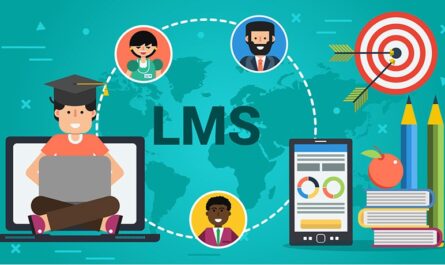What is Gamification?
Gamification refers to the use of game design elements and game principles in non-game contexts to motivate and engage users. It involves applying game mechanics and dynamics to everyday activities to encourage participation and continued usage. Some common game elements used in gamification include points, levels, virtual badges/rewards, leaderboards, challenges and storytelling. The goal is to tap into human motivations typically associated with play like achievement, competition, mastery, social influence and self-expression.
Benefits of Using Gamification
There are several compelling reasons for businesses to consider implementing Gamification strategies. Some key benefits include:
Increased Engagement and Participation – By making tasks more fun and rewarding through game mechanics, businesses can encourage higher levels of user engagement and participation. People are motivated to keep coming back to complete achievements and climb leaderboards.
Improved Customer Loyalty – As customers make progress and collect rewards, their emotional investment in a brand or product increases. This enhances customer loyalty and reduces churn. Gamification strengthens the emotional bonds between businesses and users.
Motivation to Spread Word-of-Mouth – Satisfied users who derive value and enjoyment from a gamified experience are more inclined to spread positive word-of-mouth. They act as advocates to attract new customers organically. Leaderboards and public recognition of high achievers also inspire social competition.
Enhanced Learning and Retention – Game techniques make difficult concepts more engaging and encourage exploration. Challenges, levels, feedback loops and rewards support progressive learning and help retain lessons longer term. This boosts productivity for tasks requiring information absorption.
Opportunity for Monetization – While core features remain free, some gamified systems introduce optional premium rewards or power-ups available for purchase. If implemented seamlessly as part of gameplay, this monetization does not feel coercive but presents an opportunity to generate ancillary revenue streams.
Valuable Insights from Game Data – The data collected from gamified experiences provides rich behavioral insights. Businesses gain a deeper understanding of user motivations, pain points, engagement patterns and areas needing improvement from the analytics. This supports ongoing optimization and personalization.
Implementing Gamification Successfully
The key to a successful gamification initiative lies in understanding user psychology and designing mechanics accordingly. Some best practices include:
Focus on Core Job-To-Be-Done – Even with game elements, the primary focus should be on providing value for the core task rather than just mindless gameplay. Rewards must align with and support meaningful outcomes.
Choose Appropriate Mechanics – Not all mechanics suit every context. test ideas in focus groups before implementing to pick rewards, challenges etc. that fit naturally into workflows without feeling tacked on.
Gradual Introduction of Complexity – Start simply and add layers gradually instead of an overwhelming barrage of game features at once. Respect users’ bandwidth and learning curves.
Tailor Rewards to Individual Motivators – Different people are driven by achievement, social influence etc. Offer a spectrum of rewards like virtual badges, exclusive access, public recognition suited to these profiles.
Promote Through Social Currency – Highlight star performers on showcase walls and reward evangelists who bring in new recruits. Leverage network effects for continued peer motivation.
Test, Measure, Iterate Frequently – Continuously A/B test new mechanics and analyze engagement metrics to refine the experience based on user behavior over time. Gamification is an iterative process of learning what resonates best.
Balance Fun with Customer Experience – Gamification should enhance rather than detract from the core service or product experience. Monitor closely for frustration or repetitive gameplay detracting from real utility.
By designing thoughtfully according to these best practices, businesses stand to reap rich dividends from gamification in terms of increased engagement, customer loyalty, insights and even direct monetization opportunities. Done right, it presents a compelling strategic lever to stay relevant in today’s experience-driven marketplace.
Note:
1. Source: Coherent Market Insights, Public sources, Desk research
2. We have leveraged AI tools to mine information and compile it



